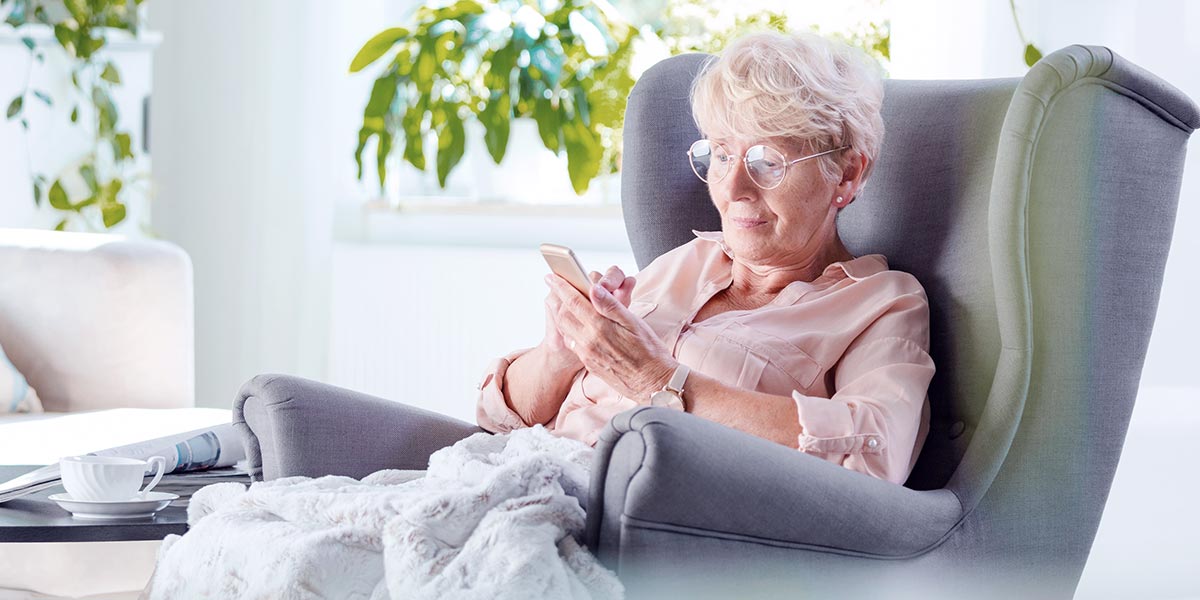5 Home automation ideas that can help the elderly

The demographic of the UK is changing. We are living longer than ever, almost 10 years longer than previous generations. This has resulted in people from all walks of life faced with the question on how best to care for the elderly and vulnerable loved ones.
1 in 5 people today in the UK are 65 or older and many carers as well as families are exploring different ways to enable their loved ones to stay at home, retain their independence and age with dignity.
From asking Alexa or programming lights, smart home technology in recent years has become even more prevalent, making life that little bit easier and more convenient. With this in mind, smart living solutions are now being considered as an effective way to support the elderly and ensure they can remain at home comfortably.
If you’re unsure whether elderly people will be able to or want to adapt to new technology, according to recent research from Ofcom, 43% of people over 65 own at least one device that connects to Wi-Fi, be it a mobile, laptop or tablet. This is up by 44% since 2016, suggesting a growing increase in elderly people embracing technology, and points towards a deepening comfort level for tech.
So how can home automation solutions and smart technology work together to support the elderly? Below we have listed 5 smart living ideas the team at Abel are implementing that could aid independence for our elderly.
1. Voice controlled Lighting.
For the elderly, falls do not always mean picking and dusting yourself back up. While some lights may be located far away, or tricky to navigate with arthritis or other mobility conditions, voice-controlled lighting can reduce some of the environmental factors that cause falls.
Smart lighting systems from manufacturers like Control4, can utilise pre-existing wiring from traditional switches and dimmers and replace them with smart lighting controls, allowing for lights to be grouped together or “scenes” to be created according to the homeowner’s needs. And when integrated with a voice-controlled device like Amazon’s Alexa, they can easily “ask” for a room to be lit so they aren’t fumbling around trying to find switches in the dark, further increasing the chance of injury.
2. Use “If This, Then That” (IFTTT) Programming
Smart home installers can link multiple devices onto one home automation system and program specific triggers to happen at certain times of the day, or if/when an event occurs.
For example, you could be notified if your loved one leaves a door unlocked between the hours of 10:00 pm and 5:00 am. You can have their heating and cooling system automatically respond to the weather conditions outside, or adjust it based on sunrise or sunset.
Security lighting can also activate when the sunsets or at specific times of the evening, so they don’t have to worry about remembering to turn it on every night.
If your loved one has a hearing problem, you can program the lights to blink when someone rings the doorbell and a video intercom can show them who is at the door so they don’t risk answering the door to a stranger.
3. Smart Cameras
Images and audio can be transmitted in real-time to a carers smartphone; should there be a need to respond to a situation. Wireless cameras can be positioned easily throughout a home, and smart intercoms located at the front door can enable your loved ones to see and speak with visitors directly from a tablet or phone before letting them in.
4. Smart lighting keypads
Smart lighting keypads can turn select fixtures on and off automatically at certain times of the day. For example, you could activate hallway lights at a dim level to make night time trips to the bathroom or kitchen safer.
When programmed correctly, smart lighting can also serve as timely reminders for the elderly. You could set kitchen lights to flash when it’s time to take medication or when the mail has been delivered.
Buttons on a smart lighting keypad can simplify routines too. By pressing one button a user can launch a command that turns off every light before bed or activates them all when there’s a knock at the door, for example.
5. Thermostats
Smart thermostats, ensure the comfort of those who choose to age in place by maintaining preferred temperature settings throughout the day automatically – no fiddling with buttons or dials.
If a loved one feels too warm or cold, they can adjust the settings directly from a smartphone or tablet.
Conclusion
For everyone, aging in an environment that is comfortable, safe and easy to work around is a matter of independence, freedom and dignity. Technology is well placed to provide the means for better living and allows our loved ones to utilise the very latest in home automation for an enhanced quality of life.
For more information on how we can help you and your loved ones improve their standard of living, get in touch for a free, no obligation quote.
Latest Articles
Top 5 tips for keeping your home secure during winter5 Reasons you should have a video doorbell
What to do in the aftermath of a burglary and how to avoid being retargeted
Potentially Lifesaving information about Fire Extinguishers and which one you need.
5 devices for your home that can support an eco-friendly lifestyle